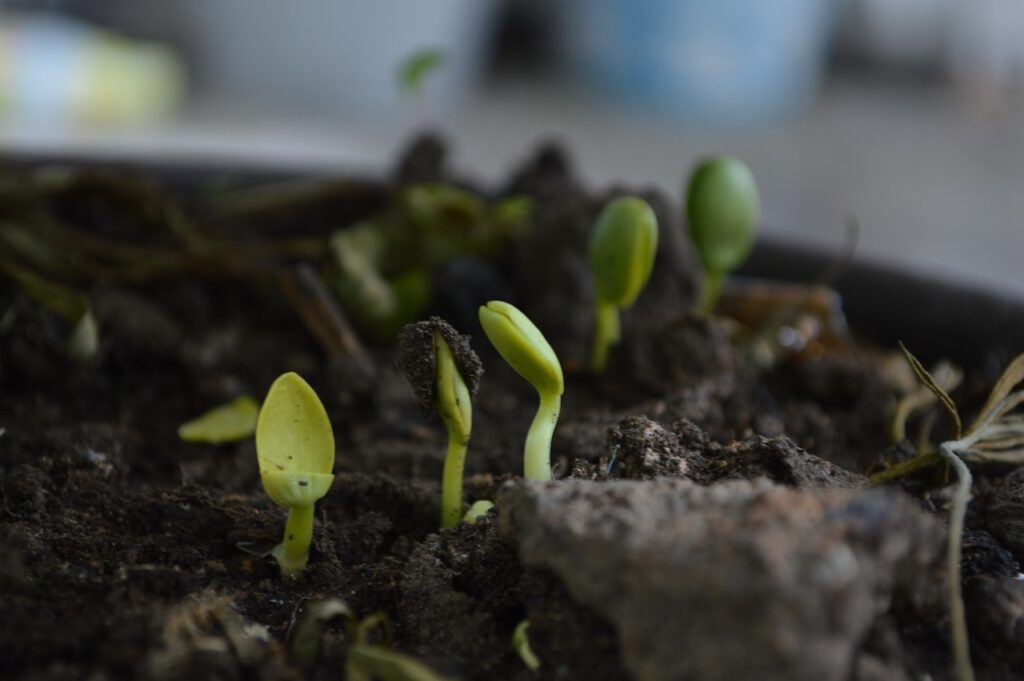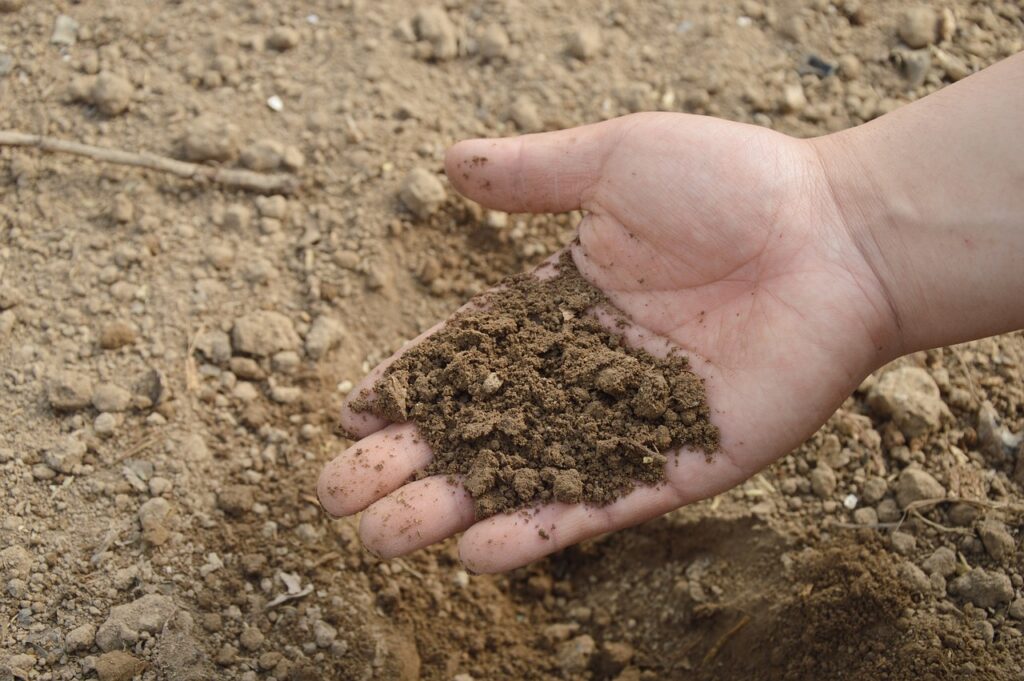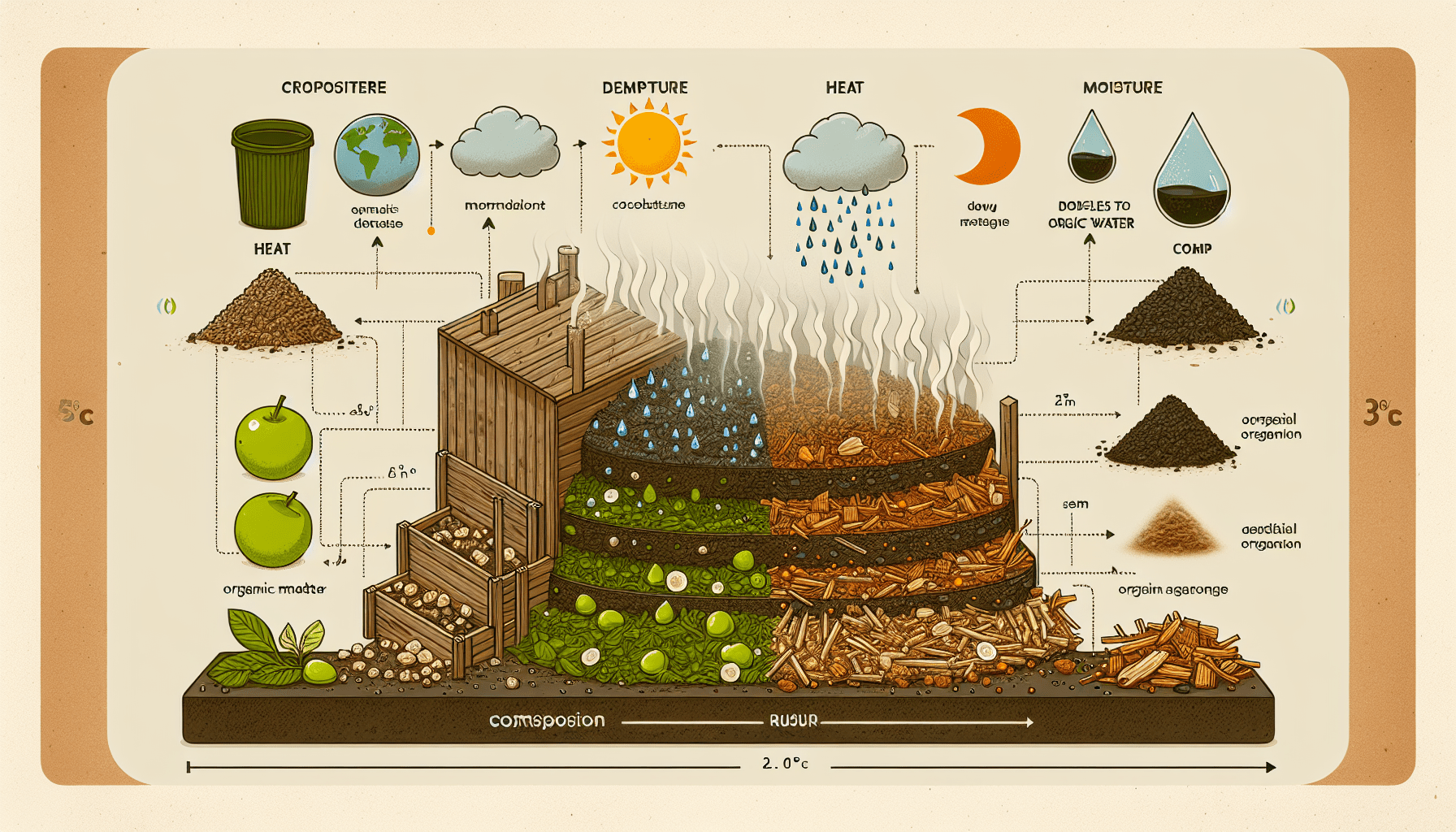In this article, we will explore the fascinating world of composting and how temperature and moisture play a crucial role in its success. By understanding the relationship between these two factors, you will not only be able to create nutrient-rich compost for your garden, but also contribute towards a more sustainable environment. So, let’s dig in and discover the impact of temperature and moisture on the magical process of composting!

Temperature
Ideal temperature for composting
When it comes to composting, temperature plays a crucial role in the success of the process. The ideal temperature for composting falls within a specific range, typically between 110°F (43°C) and 160°F (71°C). This temperature range promotes optimal conditions for the decomposition of organic matter.
Effect of high temperature on composting
High temperatures in the compost pile can have both positive and negative effects on the composting process. On the positive side, higher temperatures accelerate the decomposition process by increasing microbial activity. This results in faster breakdown of organic materials, leading to a quicker production of nutrient-rich compost.
However, excessively high temperatures can also have negative implications for composting. If temperatures exceed the upper limit of the ideal range, it can lead to the death of beneficial microbes and other organisms involved in the decomposition process. This can cause a decline in the overall quality of the compost, as well as a loss of important nutrients.
Effect of low temperature on composting
Just as high temperatures can have adverse effects on composting, low temperatures can also pose challenges for the process. When the compost pile’s temperature drops below the optimal range, microbial activity slows down significantly. This can result in a prolonged decomposition process, leading to a delay in the production of compost.
Furthermore, low temperatures can hinder the breakdown of tougher materials such as woody debris, as they require higher temperatures to decompose effectively. Therefore, maintaining a suitable temperature within the compost pile is essential to ensure efficient decomposition and the production of high-quality compost.
Monitoring temperature during composting
To maintain the ideal temperature for composting, it is crucial to monitor the temperature within the compost pile. One effective way to do this is by using thermometers specifically designed for composting. These can be inserted into the pile, allowing you to accurately gauge the temperature at different depths.
Regular monitoring of temperature enables composters to identify any deviations from the ideal range and make necessary adjustments. By ensuring the temperature remains within the optimal zone, composters can create an environment that favors the growth of beneficial microbes and maximizes the decomposition process.
Moisture
Importance of moisture in composting
Moisture is another critical factor that significantly impacts the composting process. Adequate moisture levels are essential for the survival and activity of microorganisms involved in decomposition. Without sufficient moisture, these beneficial microbes cannot thrive, resulting in a slow and ineffective decomposition process.
Ideal moisture levels for composting
Maintaining the right moisture levels in the compost pile is crucial. Ideally, the moisture content should range between 40% and 60%. This level provides enough moisture to support microbial activity while preventing saturation or excessive dryness.
Effect of too much moisture on composting
Excessive moisture in the compost pile can lead to a host of problems. It creates an oxygen-deprived environment, known as anaerobic conditions, which negatively affect the decomposition process. Anaerobic decomposition produces foul odors, such as the rotten egg smell of hydrogen sulfide, indicating the presence of harmful microorganisms.
Additionally, excess moisture inhibits the movement of air within the compost pile, preventing necessary oxygen from reaching the beneficial microbes. This slows down the composting process and can lead to the growth of undesirable organisms, such as pathogens and fungi.
Effect of insufficient moisture on composting
Insufficient moisture in the compost pile can be equally detrimental to the decomposition process. When the pile becomes too dry, microbial activity slows down or ceases altogether. Without enough moisture, microbial activity and the breakdown of organic matter are hindered, resulting in a lack of progress in compost production.
Maintaining proper moisture levels
To maintain optimal moisture levels in the compost pile, it is essential to regularly monitor and adjust moisture content as needed. Composters can achieve this by frequently checking the moisture of the material by hand or using moisture meters specifically designed for composting.
If the compost pile is too dry, adding water and thoroughly mixing the pile can help increase moisture. Conversely, if the pile is too wet, incorporating dry organic materials, such as straw or shredded paper, can help absorb excess moisture and restore a balanced moisture level.

Microbial Activity
Role of microbes in composting
Microbes are the unsung heroes of composting. They are responsible for breaking down organic materials, transforming them into nutrient-rich compost that enriches the soil. Microbes, including bacteria, fungi, and actinomycetes, function as decomposers, breaking down complex organic compounds into simpler forms that plants can utilize.
How temperature affects microbial activity
Temperature has a significant impact on microbial activity in composting. As the temperature rises within the optimal range, microbial activity increases. This leads to a more rapid breakdown of organic matter and the production of compost.
However, it is important to note that different types of microbes have different optimal temperature ranges for activity. Mesophilic microbes, which are active at moderate temperatures, thrive between 68°F (20°C) and 113°F (45°C). Meanwhile, thermophilic microbes, which prefer high temperatures, typically work most efficiently between 113°F (45°C) and 158°F (70°C).
How moisture affects microbial activity
Moisture is also a crucial factor influencing microbial activity in composting. Microbes require a certain level of moisture to carry out their metabolic functions effectively. Adequate moisture not only enables microbial growth but also facilitates the transportation of nutrients and the breakdown of organic matter.
Insufficient moisture can lead to a decline in microbial activity, slowing down the decomposition process. On the other hand, excessive moisture can suffocate and wash away beneficial microbes, hindering their ability to break down organic matter. Therefore, maintaining the right moisture levels is essential for providing an optimal environment for microbial activity.
Balancing microbial activity with temperature and moisture
To achieve successful composting, it is important to strike a balance between microbial activity, temperature, and moisture. By maintaining the optimal temperature and moisture levels, composters can foster the growth of a diverse microbial community and create conditions that promote efficient decomposition.
Regular monitoring of temperature and moisture, as mentioned earlier, allows composters to adjust these variables as needed. By providing favorable conditions for microbial activity, composters can ensure the production of high-quality compost within a reasonable timeframe.
Decomposition Process
How temperature influences decomposition
Temperature plays a pivotal role in the decomposition process during composting. As the temperature increases within the optimal range, organic matter breaks down at a faster rate. The heat generated from microbial activity accelerates chemical reactions, facilitating the breakdown of complex organic compounds into simpler forms.
Higher temperatures also enhance the activity of enzymes produced by microbes, which further aid in the decomposition process. Enzymes act as biological catalysts, speeding up the breakdown of organic matter and increasing the availability of nutrients.
Conversely, low temperatures slow down the decomposition process, as microbial activity decreases. When the compost pile is exposed to colder temperatures, the breakdown of organic matter becomes less efficient, resulting in a longer composting period.
How moisture influences decomposition
Moisture is equally instrumental in the decomposition process. Adequate moisture content enables microorganisms to thrive and effectively break down organic matter. Without sufficient moisture, microbial activity decreases, impeding the decomposition process.
Moisture not only provides a suitable environment for microorganisms but also facilitates the movement of necessary substances within the compost pile. It aids the transportation of oxygen, which is essential for aerobic decomposition, as well as the distribution of nutrients throughout the pile.
Insufficient moisture can cause the decomposition process to stall, while excessive moisture can create anaerobic conditions, limiting the breakdown of organic matter. By maintaining optimal moisture levels, composters ensure that the decomposition process proceeds efficiently, resulting in the production of high-quality compost.
Synergistic effects of temperature and moisture on decomposition
Temperature and moisture work hand in hand to influence the decomposition process. When the compost pile maintains its ideal temperature range, microbial activity is heightened. This, coupled with adequate moisture, creates an environment that supports efficient decomposition.
As temperature increases, microbes become more active, and the breakdown of organic matter accelerates. Moisture plays a crucial role in sustaining this heightened microbial activity by providing a suitable environment for microorganisms to thrive and carry out their functions effectively.
On the other hand, if moisture levels are imbalanced, high temperatures alone may not guarantee efficient decomposition. Excessive moisture in conjunction with high temperatures can lead to the loss of important nutrients or the proliferation of undesirable microorganisms. Therefore, maintaining a harmonious balance between temperature and moisture is crucial to optimize the decomposition process.
Factors affecting the rate of decomposition
Beyond temperature and moisture, several other factors can impact the rate of decomposition during composting. The composition of organic materials, the size of the compost materials, the availability of oxygen, and the carbon-to-nitrogen ratio all play significant roles in this process.
Organic materials with a higher carbon-to-nitrogen ratio decompose more slowly compared to those with an optimal balance. Materials rich in carbon, such as straw or sawdust, take longer to break down, requiring additional time for decomposition.
Particle size also matters, as smaller pieces provide a larger surface area for microbial activity, speeding up the decomposition process. Additionally, aeration, achieved through regular turning of the compost pile, ensures the availability of oxygen for aerobic decomposition.
By carefully considering these factors and actively managing the composting process, composters can optimize the rate of decomposition and achieve a higher yield of rich, nutrient-dense compost.

Maintaining Optimal Conditions
Using thermometers to monitor temperature
To maintain optimal temperature levels during composting, it is essential to monitor the temperature regularly. Using thermometers specifically designed for composting, composters can measure the temperature at various depths within the compost pile.
Placing the thermometer at different locations within the pile helps identify any temperature variations and ensures that the composting process remains within the ideal temperature range. Regular monitoring enables timely adjustments to be made, ensuring that the compost pile provides the best conditions for efficient decomposition.
Adjusting moisture levels as needed
Constant monitoring of moisture content is equally important to maintain optimal conditions in the compost pile. By checking the moisture level periodically, composters can make adjustments to ensure that the pile maintains the right amount of moisture for successful decomposition.
If the compost pile is too dry, adding water in small increments while thoroughly mixing the material can help increase moisture levels. Conversely, if the pile is too wet, incorporating dry organic materials, such as dried leaves or shredded paper, can help absorb excess moisture and restore balance.
Turning the compost pile to regulate temperature and moisture
Regularly turning the compost pile is an effective method for regulating both temperature and moisture. Turning the pile helps redistribute heat and air throughout the compost, preventing the formation of cold spots and encouraging aerobic decomposition.
Turning the pile also facilitates the mixing of dry and moist materials, ensuring a uniform distribution of moisture. This prevents the pile from becoming too dry or too wet, maintaining optimal moisture levels for microbial activity.
Covering the compost pile to retain moisture and heat
Covering the compost pile is another practice that helps maintain optimal conditions. By covering the pile with a tarp or other suitable material, composters can retain moisture and heat within the pile.
Covering the pile prevents excessive evaporation, ensuring adequate moisture levels are maintained. It also helps to trap the heat generated during decomposition, promoting thermophilic microbial activity and speeding up the decomposition process.
By consistently implementing these practices, composters can create and maintain optimal conditions for successful composting, resulting in the production of high-quality compost.
Accelerating Composting
Using heat-generating methods for faster composting
Composters aiming to speed up the composting process can utilize heat-generating methods. These methods involve providing additional sources of heat to the compost pile, which increases the temperature and accelerates the decomposition process.
One popular heat-generating method is the use of hot composting techniques. This method relies on layering organic materials with different carbon-to-nitrogen ratios to create a balance that generates heat. Adding high-nitrogen materials, such as fresh grass clippings or manure, helps raise the temperature of the compost pile, stimulating microbial activity and speeding up decomposition.
Adding moisture-retaining materials to enhance composting
To enhance composting and maintain optimal moisture throughout the process, composters can add moisture-retaining materials to the compost pile. Incorporating materials such as straw, hay, or shredded paper helps absorb and retain moisture, preventing excessive dryness.
These moisture-retaining materials act as sponges, absorbing excess moisture and releasing it slowly over time. By adding them to the compost pile, moisture levels can be balanced, supporting microbial activity and promoting efficient decomposition.
Balancing temperature and moisture for rapid decomposition
For composters seeking rapid decomposition, it is essential to strike a delicate balance between temperature and moisture. The right combination of temperature and moisture creates an ideal environment for microbial activity, resulting in accelerated decomposition.
By monitoring temperature and moisture levels closely, composters can make adjustments as needed. This balance ensures that the compost pile remains within the optimal temperature range and maintains adequate moisture throughout the process, supporting the quickest breakdown of organic matter.
Managing composting systems to optimize temperature and moisture
In addition to heat-generating methods and moisture-retaining materials, managing composting systems efficiently is crucial for optimizing temperature and moisture. Adequate aeration through regular turning of the compost pile promotes oxygen flow, helping maintain optimal conditions for decomposition.
Creating compost piles of appropriate sizes is also important. Overly small piles may not generate enough heat, while excessively large piles can make temperature regulation and moisture distribution challenging. By managing the composting system effectively, composters can fine-tune temperature and moisture levels, promoting rapid decomposition and producing high-quality compost.

Preventing Issues
Addressing overheating in the compost pile
While high temperatures are desirable in composting, overheating can occur and cause problems. Overheating typically happens when the compost pile lacks sufficient oxygen, leading to anaerobic conditions. These conditions can arise from the pile being too large or poorly aerated.
To address overheating, composters should monitor the temperature closely and promptly intervene when it exceeds the upper limit of the optimal range. Turning the pile more frequently or breaking it down into smaller sections can improve aeration, allowing excess heat to dissipate.
Avoiding excessive moisture accumulation
Excessive moisture accumulation, often resulting from heavy rainfall or improper moisture management, can have detrimental effects on composting. The excess moisture can lead to anaerobic conditions and the growth of undesirable microorganisms.
To avoid excessive moisture, composters should cover the pile during periods of heavy rain. Consistently monitor moisture levels and adjust as necessary by adding dry materials or turning the pile to increase aeration and promote moisture evaporation.
Preventing cold spots in the compost pile
Cold spots within the compost pile indicate areas that are not decomposing efficiently. These cold spots can occur due to inadequate mixing, poor moisture distribution, or insufficient aeration.
To prevent cold spots, regular turning of the compost pile is crucial. By mixing the pile thoroughly, composters ensure that all materials are exposed to optimal temperature and moisture levels. This practice helps redistribute heat and encourages uniform decomposition throughout the pile.
Preventing fungal or mold growth due to excessive moisture
Excessive moisture can create an environment conducive to fungal or mold growth in the compost pile. These unwanted growths can compete with beneficial microorganisms and hinder the decomposition process.
To prevent fungal or mold growth, composters should maintain optimum moisture levels by avoiding excessive watering and providing proper aeration. Maintaining a balanced moisture level ensures a healthy microbial population, promoting efficient decomposition and discouraging the growth of harmful organisms.
Optimizing Composting Resources
Using temperature and moisture to speed up composting
Temperature and moisture are valuable resources in the composting process when utilized effectively. By understanding their influence on the decomposition process, composters can harness these resources to speed up composting.
Maintaining optimal temperature and moisture levels creates a favorable environment for microbial activity, enabling faster decomposition. By carefully monitoring and adjusting these factors, composters can accelerate the breakdown of organic matter and produce compost more efficiently.
Utilizing proper composting techniques for efficient decomposition
In addition to temperature and moisture control, implementing proper composting techniques enhances the efficiency of the decomposition process. Layering materials with different carbon-to-nitrogen ratios, regularly turning the compost pile, and maintaining proper aeration all contribute to efficient decomposition.
Composters should also consider the particle size of the materials they add to the pile. Smaller pieces create a larger surface area, providing more opportunities for microbial activity and speeding up decomposition.
By utilizing these techniques, composters can optimize the decomposition process, ensuring the efficient breakdown of organic matter and the production of high-quality compost.
Avoiding wastage of composting materials by optimizing conditions
Optimizing temperature and moisture within the compost pile helps prevent wastage of composting materials. When the temperature and moisture levels are within the optimal range, organic matter decomposes more efficiently, leaving less residual material behind.
Wastage can occur when compost materials remain intact or decompose slowly due to unfavorable conditions. By finely tuning the composting conditions, composters can maximize the breakdown of organic matter, minimizing wastage and maximizing the use of available composting materials.
Maximizing the yield of rich compost through temperature and moisture control
Temperature and moisture control are pivotal for maximizing the yield of rich compost. By maintaining optimal conditions throughout the decomposition process, composters can ensure that the compost pile efficiently breaks down organic matter into nutrient-rich compost.
When temperature and moisture levels are properly managed, microbial activity thrives, decomposition progresses quickly, and nutrients become more readily available. This sets the stage for the production of a high-quality compost with valuable nutrients that enhance soil health and support robust plant growth.
Successful Composting
Understanding the importance of temperature and moisture
Temperature and moisture are integral factors for successful composting. Understanding their significance helps composters create and maintain optimal conditions for efficient decomposition.
Maintaining the ideal temperature range ensures that microbial activity remains at peak levels, promoting rapid breakdown of organic matter. Adequate moisture supports microbial growth and facilitates nutrient transport, enhancing decomposition.
By recognizing the pivotal roles of temperature and moisture in composting, composters can optimize their practices and achieve successful outcomes.
Implementing best practices for composting
To achieve successful composting, it is essential to implement best practices throughout the process. By following guidelines for temperature and moisture control, proper turning techniques, and appropriate compost layering, composters can ensure optimal decomposition.
Implementing the use of thermometers, moisture meters, and other monitoring tools facilitates accurate measurement and adjustment of temperature and moisture levels. Proper turning and compost layering techniques promote aeration, temperature distribution, and uniform decomposition.
By adhering to these best practices, composters create an environment that fosters efficient decomposition and leads to high-quality compost.
Monitoring and adjusting temperature and moisture throughout the process
Composting is an ongoing process that requires consistent monitoring and adjustments to temperature and moisture levels. Throughout the composting journey, composters should regularly check temperature and moisture content to maintain optimal conditions.
By vigilantly monitoring these variables, composters can identify any deviations from the ideal range and make necessary adjustments. This includes adjusting turning frequency, moisture addition, and covering the pile. Regular maintenance of temperature and moisture ensures the sustainability of microbial activity and the successful progression of decomposition.
Achieving high-quality compost through optimal temperature and moisture levels
Ultimately, the goal of composting is to produce high-quality compost that enriches soil and supports healthy plant growth. Achieving this outcome relies heavily on maintaining optimal temperature and moisture levels.
By ensuring that temperature and moisture are within the ideal range, composters create an environment that optimizes microbial activity and decomposition. This results in nutrient-rich compost that enhances soil fertility and provides the necessary components for robust plant growth.
Creating and maintaining optimal temperature and moisture conditions throughout the composting process is key to achieving high-quality compost and reaping the many benefits of successful composting.
Conclusion
Temperature and moisture are the dynamic duo of composting, shaping the success and efficiency of the decomposition process. By understanding their roles and managing them effectively, composters can create the ideal environment for microbial activity, promoting rapid breakdown of organic matter and yielding high-quality compost.
Maintaining the optimal temperature range ensures increased microbial activity and quicker decomposition. Regular monitoring and adjustments using thermometers help composters stay on top of temperature fluctuations. Additionally, moisture content is essential for sustaining microbial life and supporting nutrient transport. Maintaining proper moisture levels allows composters to create an environment that fosters microbial growth and promotes efficient decomposition.
By balancing temperature and moisture and implementing best practices such as regular turning, composters can optimize the decomposition process. Managing other factors, such as particle size, oxygen availability, and carbon-to-nitrogen ratio, further augments the rate of decomposition.
To maximize composting resources, composters can utilize heat-generating methods, incorporate moisture-retaining materials, and optimize composting systems. These approaches help expedite the decomposition process and reduce wastage of composting materials.
Preventing issues such as overheating, excessive moisture accumulation, cold spots, and fungal growth ensures the smooth progression of composting. By proactively addressing these challenges, composters maintain favorable conditions and safeguard the quality of the compost pile.
Successful composting hinges on optimally utilizing temperature and moisture to spur efficient decomposition. By implementing best practices, monitoring temperature and moisture levels, and adjusting them as needed, composters can achieve high-quality compost that enriches soil and supports vibrant plant growth. Ultimately, composting is a sustainable and rewarding process that empowers individuals to contribute to a greener future.




